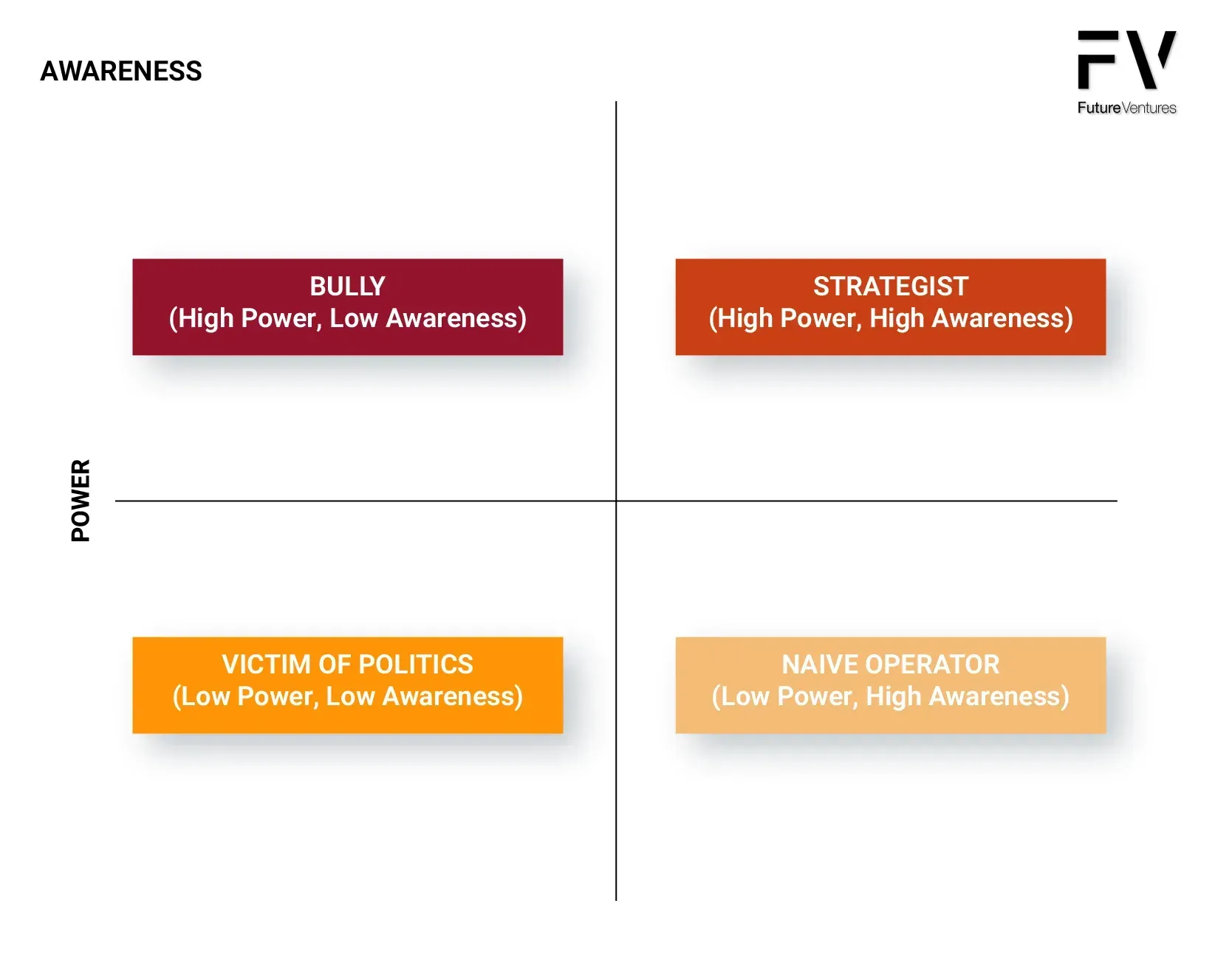Mastering the 48 Laws of Power: Essential Insights and Strategies for Founders, CEOs, and Scaling Businesses
Introduction: Why Power Matters More Than Ever
If you’re scaling a company, you’re not just managing cash flow, headcount, and churn. You’re playing a high-stakes game of power. Every board meeting, investor pitch, and competitor move is a negotiation in power dynamics. Ignore that fact and you’ll get out-positioned. Understand it, and you gain an unfair advantage.
Robert Greene’s The 48 Laws of Power is infamous: half manual, half warning label. It’s been embraced by CEOs, generals, rappers, and even inmates, because it distills human behaviour down to raw rules. It is a multi-million-copy bestseller and has been praised by mainstream outlets, including People magazine. Love it or hate it, the book survives because it works. Greene distilled three thousand years of power history into forty-eight essential laws.
The 48 Laws of Power is a self-help book written by Robert Greene that has become synonymous with the pursuit of power, influence and scale. The book has sold over 1.2 million copies in the United States alone and millions more globally.
Greene’s world is feudal courts, silk robes, and Machiavellian plots. You don’t run a 17th-century kingdom. You run a business in 2025. The question is: How do you apply The 48 Laws of Power in today’s boardrooms, venture ecosystems, and hypercompetitive markets without becoming a cartoon villain? Greene draws on historical figures like Machiavelli, Sun Tzu, and Henry Kissinger to illustrate the amoral nature of power.
This guide is your translation. You’ll see how to court attention in an algorithmic world, crush enemies without lawsuits, build fortresses in a cyber age, and turn obstacles into opportunities. Think of this not as a book summary, but as a strategic operating system for power in business.
Part I: Understanding Power Dynamics
The Truth About Power
Power isn’t about titles or corner offices. It’s about leverage over outcomes. The CEO who can’t rally talent, persuade investors, or crush competitors isn’t powerful. Rather, they’re a hostage with a C-suite badge. Reputation is the cornerstone of power.
The 48 Laws begin with a core truth: people are self-interested. They act to protect status, wealth, ego, and survival. When you understand that, you stop being surprised by politics, betrayals, or sudden shifts in loyalty. Instead, you predict them. Understanding manipulation tactics is a key value of the book, allowing readers to demystify and defend against unethical behaviours.
The central premise of the book is that power is an amoral game that is constantly being played. Additionally, the book advises against committing to anyone in order to maintain control over your relationships, ensuring flexibility and leverage in interactions.
Modern Application: Critics find the worldview in the book excessively cynical, suggesting it promotes a relentless quest for power that breeds paranoia.
- Investor Relations: Investors don’t care about your feelings. They care about multiples. In negotiations and interactions, always appeal to people's self-interest by framing your story around what benefits them the most.
- Team Leadership: High-performers want growth and recognition, not slogans. Give it or lose them.
- Competitors: They’ll happily burn billions to kill your category (see: Uber vs. Lyft).
👉 Key Takeaway: If you’re surprised by betrayal, you weren’t paying attention.
Case Study: Bezos vs. Publishers
Jeff Bezos applied Greene’s laws like gospel. As one of the powerful figures who has successfully applied these laws, Bezos exemplifies how such principles can be used to dominate entire industries. Publishers underestimated Amazon early on. Bezos courted attention relentlessly (“Earth’s Biggest Bookstore”), created dependency (publishers couldn’t sell without him), then crushed them with data and scale. He didn’t just play the game; he rewrote it.
Framework: The Power Dynamics Matrix
| Axis | Low Awareness | High Awareness |
|---|---|---|
| Low Power | Victim of politics | Naïve operator |
| High Power | Bully, short-lived gains | Strategist, sustainable |
Each quadrant reflects not only your position but also the different powers you can leverage. Whether it's the authority of a strategist or the influence of a bully, your awareness determines how effectively you utilize these powers.
You want to live in the top right: a strategist with power and awareness. That’s where founders who scale to IPOs and industry dominance sit.

Part II: Building and Guarding Your Reputation
Law #6: Court Attention at All Costs
In historic times, this meant dazzling courts with jewels. In present times, it’s owning your narrative in a noisy market. Attention is oxygen. Prioritize it at all costs. Lose it and your competitors will suffocate you.
- Elon Musk courts attention so relentlessly that every tweet moves markets.
- Nike doesn’t sell shoes; they sell cultural moments.
- You can dominate by making your startup the category voice: whether through podcasts, livestreams, whitepapers, or viral stunts.
How You Apply This:
- Audit: If I Google your company, does it look alive, or like a ghost? If I scan your website, would I find a lot of high-quality backlinks, robust organic traffic and loads of AI snippets? Or, would I see an online ghost?
- Invest: Spend 10–15% of your burn on visibility, brand reach and conversions.
- Spectacle: Launch with drama! Don’t whisper, thunder!
Law #1: Never Outshine the Master
Translation: Don’t humiliate your investors, mentors, or bosses. Founders who publicly criticize VCs often find doors closed quietly. Respect hierarchy, even as you climb it. Don't provoke your competitors, unless you are certain that you can beat them at their own game.
Application:
- With your board, make them feel wise and critical. Don’t blindside them with brilliance. Make them co-authors of your wins. Also, avoid stepping into someone else's shoes. Focus on building your own legacy rather than imitating your predecessors.
- With talent, flip the law: outshine yourself. If you’re insecure about being outshone, you’ll repel A-players.
Law #5: Build Your Reputation as a Fortress
A reputation is compound interest. As Warren Buffett once said, “It takes 20 years to build a reputation and five minutes to ruin it.”
Paying the full price for quality and integrity is essential to maintaining a good reputation and avoiding future problems that shortcuts or hidden costs can cause.
In business, reputation is:
- Investor trust (can you be counted on?)
- Talent magnetism (will people quit Google to join you?)
- Customer loyalty (do they renew, evangelize, defend you online?)
👉 Future Lens: In an AI-filtered world, reputation data will be algorithmically scored. Trust metrics will be displayed alongside credit scores. Guard your reputation like your company’s stock price. It will literally be one.
Part III: Dealing with Enemies and Competitors
Law #15: Crush Your Enemy Totally
Sounds medieval, right? But in startup land, half measures breed zombies. If a competitor has 20% of your TAM, they’ll haunt you in every investor pitch.
Modern Example:
- Facebook vs. Snapchat. Zuckerberg didn’t just compete; he copied Stories, integrated it into Instagram, and starved Snap’s growth. Brutal, but highly effective.
How You Apply This:
- Identify your Top 3 threats.
- Choose one strategy: acquire, out-innovate, or commoditize their strength.
- Commit fully.
- Aim for total domination. Leave no room for rivals to recover.
Law #2: Use Enemies as Fuel
Never put too much trust in friends, learn how to use enemies. Former enemies often make more loyal allies than friends, because they have more to prove. Enemies can become powerful motivators and strategic assets if you channel the rivalry productively.
Sometimes enemies are your best PR. Steve Jobs vs. Bill Gates made Apple a rebel brand. Netflix vs. Blockbuster fueled Netflix’s underdog story.
Ask yourself: Who’s your Blockbuster? Who's your archnemesis? Who can you define yourself against? When leveraging conflict, always recommend absolute self-preservation as a key strategy. Protect yourself first while using your enemies to fuel your narrative.
Table: Enemy Strategies
| Approach | When to Use | Risk |
|---|---|---|
| Crush | When survival is at stak | Escalates costs, attracts scrutin |
| Leverage | When the enemy makes you look better | May strengthen them indirectly |
| Ignore | When the enemy is an irrelevant distraction | Risk of underestimating them |
👉 Note: The surrender tactic can be used as a strategic option when direct confrontation is too risky. By appearing to yield temporarily, you may gain a psychological edge, frustrate your opponent, and create opportunities to turn perceived weakness into an advantage.
Part IV: Strategy and Planning
Law #28: Enter Action with Boldness
Timidity kills startups. Markets reward decisive moves. Investors don’t back founders who hedge. They back those who say, “We’re going to dominate this category.”
Case Study:
Airbnb launched at the height of the 2008 financial crisis. Bold move. Investors thought renting your couch to strangers was insane. But boldness turned skepticism into curiosity, then inevitability. The book presents compelling examples of boldness leading to success, illustrating how audacious actions can significantly alter the course of events.
Action Steps:
- Kill “maybe.” Either commit or cut.
- Make moves visible. Boldness doubles as spectacle.
- Train your team: timid strategy meetings breed timid execution.
Law #29: Plan All the Way to the End
Greene’s warning is timeless: don’t play one move ahead. Chess is lost not by a bad move now, but by not seeing ten moves later. Historical examples demonstrate that leaders like Napoleon, who failed to plan for the Russian winter, suffered devastating losses, whereas others, such as Winston Churchill, succeeded through meticulous, long-term planning.
In scaling companies, this means:
- Runway planning: Always have 18–24 months of oxygen. Fail to plan, plan to fail.
- Exit scenarios: IPO, acquisition, or private empire. Decide early but continuously adjust based on the best available information.
- Strategic hires: Don’t just hire for today’s bottleneck, hire for tomorrow’s scale.
Law #18: Do Not Build Fortresses to Protect Yourself (Except Digital Ones)
Greene said isolation is dangerous. True. Founders who wall themselves off from feedback, markets, or advisors get blindsided.
However, in 2025, you will need fortresses, such as cybersecurity, data moats, and proprietary AI models. Build those walls high, while staying open to market signals. Even prison inmates have turned to the book for guidance on protecting themselves in challenging environments, showing its relevance for anyone seeking effective self-defence strategies.
Part V: Overcoming Obstacles
Law #25: Re-Create Yourself
Markets change. Power shifts. You must evolve. Think of Netflix: from DVD rentals to streaming to original content to gaming. That’s re-creating yourself.
For You:
- Kill your sacred cows. The product that got you to $10 million may not be the one that gets you to $100 million.
- Rebrand before the market rebrands you.
- Treat identity as flexible, not fixed.
- Re-creating yourself is a proven way to gain power in changing markets.
Law #22: Turn Weakness into Strength
Constraints breed innovation. If you don’t have big budgets, you get scrappy. If you’re not a first mover, you learn from their mistakes.
Example: Slack was born out of a failed game startup. The weakness became the product. Transforming weakness into strength can have a lasting impact on people’s lives and careers, shaping their future opportunities and resilience.
Action Step: Audit your “weaknesses.” Ask: If I flipped this on its head, could it be a moat?
Law #37: Create Compelling Spectacles
Attention spans are short. Data alone won’t win hearts. You need a theatre.
- Steve Jobs’ iPhone launch wasn’t about specs. It was about creating a spectacle.
- Tesla Cybertruck reveal was so theatrical it broke glass (literally).
For You:
- Product launches should be events, not emails.
- All-hands should feel like rallies, not funerals.
- Fundraising should feel like investors are being inducted into a movement.
- Compelling spectacles are a proven way for powerful people to impress people and command attention.
Part VI: Maintaining Integrity and Ethics
The Paradox of Power and Principle
The pursuit of power, as Robert Greene outlines in his internationally renowned New York Times bestseller, “The 48 Laws of Power,” is often viewed as a zero-sum game. But the real art lies in mastering the paradox: how do you gain ultimate control and transform weakness into strength, without losing your moral compass? Greene’s laws, like “Never Outshine the Master” and “Crush Your Enemy Totally”, may sound ruthless, but they’re rooted in a deep understanding of human nature and the realities of human behaviour in high-stakes environments.
True power isn’t about trampling over others; it’s about reading the room, anticipating moves, and using the laws of power to navigate complex dynamics. The best leaders know when to assert dominance and when to show restraint, turning the 48 laws into a toolkit for both self-defence and strategic advancement. By understanding the motivations behind people’s self-interest, you can avoid being perceived as the wrong person in the eyes of those who matter and instead build a reputation that commands respect.
Ultimately, the 48 Laws teach that power and principle aren’t mutually exclusive. The most effective leaders use the laws to achieve their goals, but do so in a way that aligns with their own belief system. This is how you attain true power: by mastering the game without losing yourself in it.
Navigating Ethical Dilemmas in High-Stakes Leadership
In the business world, every decision comes with a price. There’s no free lunch. High-stakes leadership means facing ethical dilemmas where the right path isn’t always clear. The key is to understand the laws of power and the nuances of human behaviour, so you can make choices that protect your good reputation while still advancing your cause.
Laws like “Conceal Your Intentions” and “Enter Action with Boldness” aren’t about deception for its own sake. They’re about strategic self-preservation and maximizing the value of time. Great leaders recognize that people rely on them for direction and validation, and that every move is closely scrutinized. By being aware of these dynamics, you can balance your own interests with those of your team, investors, and stakeholders.
The best revenge against ethical ambiguity is clarity: know your values, understand the power strategies at play, and make decisions that you can stand behind. Ultimately, the 48 Laws serve as a definitive guide for navigating the complex and nuanced aspects of leadership. Helping you emerge not just as a powerful figure, but as a respected one.
Part VII: Creating a Compelling Vision
Vision as a Power Multiplier
A compelling vision isn’t just a nice-to-have; it’s a force multiplier for power. People crave direction, meaning and a cause to rally behind. Great leaders, from historical figures to today’s tech icons, use vision to create a deep following and inspire action.
Laws like “Win Through Your Actions, Never Through Argument” and “Play on People’s Need to Believe to Create a Cultlike Following” are about more than persuasion. They’re about building a belief system that others want to be part of. Selective honesty, suspense, and the mirror effect all play a role in making your vision irresistible. When you re-create your own life and business in your own fashion, you invite others to join a movement, not just a company.
The result? A strong following, increased respect, and the ability to transform weakness into strength. Vision gives you ultimate control, not through domination, but through inspiration. The best leaders use the laws of power to craft visions that are both arresting and achievable, turning ordinary teams into genius power game players.
👉 Action Step: Audit your current vision. Does it court attention, create compelling spectacles, and give people a cause worth fighting for? If not, it’s time to re-create it because in the art of power, vision is your most valuable information and your greatest weapon.
Part VI: The Laws in the Age of AI and Networks
The 48 Laws were written for kings and courtiers. But the future will remix them:
- Court Attention at All Costs → Court Algorithms at All Costs. If TikTok’s feed ignores you, you don’t exist. The laws often advocate for deception and misdirection to manipulate social dynamics and maintain power.
- Build Fortresses → Build Data Moats. Data is the new fortress wall. In the age of platforms, making people dependent on your ecosystem is crucial—when others rely on your technology, you maintain influence and control.
- Crush Your Enemy Totally → Collaborate Until You Own Them. The new “crush” is absorbing ecosystems through partnerships and APIs.
- Enter Action with Boldness → Prototype Fast, Ship Faster. The cost of timidity is infinite in AI cycles. Many laws encourage adaptability and flexibility in strategy, asserting the need to remain unpredictable.
- Court Attention at All Costs → Court Algorithms at All Costs. If TikTok’s feed ignores you, you don’t exist.
- Build Fortresses → Build Data Moats. Data is the new fortress wall.
- Crush Your Enemy Totally → Collaborate Until You Own Them. The new “crush” is absorbing ecosystems through partnerships and APIs.
- Enter Action with Boldness → Prototype Fast, Ship Faster. The cost of timidity is infinite in AI cycles.
The Top 10 Founders’ Extended Laws of Power
So, in addition to adapting his 48, here are the Top 10 “Founder Laws of Power” based on our work with scaling founders. These laws are modern, battle-tested extensions that reflect today’s realities of venture, scale, and digital ecosystems.
Law 49: Own Your Data, Own Your Destiny
In Greene’s day, land was power. Today, it’s data. If your data sits in someone else’s ecosystem (Amazon, Google, Apple), they own your leverage. Founders who build data moats, such as exclusive user insights, proprietary models, and community graphs, don’t just survive; they dictate markets.
👉 Play: Treat every customer interaction as a data transaction. Structure systems to compound insights.
Law #50: Control the Narrative in the Age of Algorithms
Attention used to be court gossip. Now it’s controlled by feeds, rankings, and algorithms. If you don’t master how your brand is surfaced through SEO, GEO, social, PR, and AI discovery, you will disappear.
👉 Play: Build distribution as obsessively as product. If the algorithm buries you, you don’t exist.
Law #51: Build Strategic Optionality
Greene warned against overcommitting. In scale-ups, optionality is your hedge against chaos. Investors will try to box you in (“this is the only path to IPO”), but you need multiple exit ramps: acquisition, roll-up, IPO, sustainable private empire.
👉 Play: Build at least two future narratives simultaneously. Don’t be captive to a single story.
Law #52: Control the Cap Table Like a Battlefield
Your ownership structure is your kingdom. Founders who lose control early, through aggressive dilution or “dumb money,” often find themselves as employees of their own company.
👉 Play: Treat every fundraising like a war strategy. Understand liquidation preferences, voting rights and dilution like generals understand terrain.
Law #53: Manage Energy, Not Just Time
Scaling isn’t a sprint; it’s a marathon with landmines. Burnout kills more founders than competitors. Greene never mentioned sleep cycles, but in 2025, mental and physical stamina are non-negotiable power levers.
👉 Play: Guard your energy like your cap table. Time-block recovery. Protect decision-quality.
Law #54: Build Ecosystem Power, Not Just Company Power
Founders who build ecosystems (e.g., platforms, APIs, communities) become indispensable. Stripe didn’t just build payments; they built developer power. OpenAI didn’t just ship models; they built an ecosystem of plugins, APIs, and distribution.
👉 Play: Ask: How do I become infrastructure, not just a product?
Law #55: Master Crisis Power
Power isn’t tested in peacetime. It’s tested in layoffs, failed launches, or scandals. Greene described keeping people in a state of suspended terror; you must keep them in a state of suspended confidence.
👉 Play: Run fire drills. Rehearse crisis comms. In chaos, the calmest leader becomes the most powerful.
Law #56: Leverage Transparency as a Weapon
Greene thrived on concealment. But in the hyper-connected age, concealment often backfires. Selective radical transparency with teams, markets, and even investors builds disproportionate trust.
👉 Play: Default to openness where others hide. It disarms critics and accelerates loyalty.
Law #57: Architect Culture as a Power Source
Greene wrote about cults of personality. Today, culture is the modern cult. A strong culture multiplies execution, attracts talent, and insulates against crisis.
👉 Play: Codify values early. Scale them intentionally. Treat culture as an asset on the balance sheet.
Law #58: Protect Founder Brand Equity
Your personal reputation as a founder is the company’s most fragile, leveraged asset. Greene saw power in impersonality. Today, founder identity is inextricably linked to a company's brand. Think Musk, Bezos, Whitney Wolfe Herd.
👉 Play: Curate your digital footprint, media presence, and thought leadership like you curate your financials. It compounds.
Conclusion: Your Power Operating System
The 48 Laws of Power aren’t morality tales. They’re X-rays of human behaviour. Ignore them and you’ll be manipulated. Use them, and you’ll scale not just a company, but also your influence. Critics argue that adhering to the book’s principles would lead to unhealthy relationships and a superficial form of power.
As a founder or CEO, power isn’t optional. It’s the currency of scaling. The point isn’t to become Machiavelli in a hoodie. It’s to translate timeless laws into today’s scaling playbook.
- Court attention.
- Build your reputation.
- Crush enemies when necessary.
- Plan bold moves.
- Re-create yourself relentlessly.
War historians have praised the book for its insights into strategy and power, highlighting its relevance not only in business but also in the study of conflict and leadership.
Ultimately, business is a game of power. And those who master the rules don’t just play it; they redefine it.
👉 Action: Download the 48 Laws of Power for Scale-up Founders, including law interpretations and actionable strategies for each law.
Related Insights and Thought Leadership to Explore










